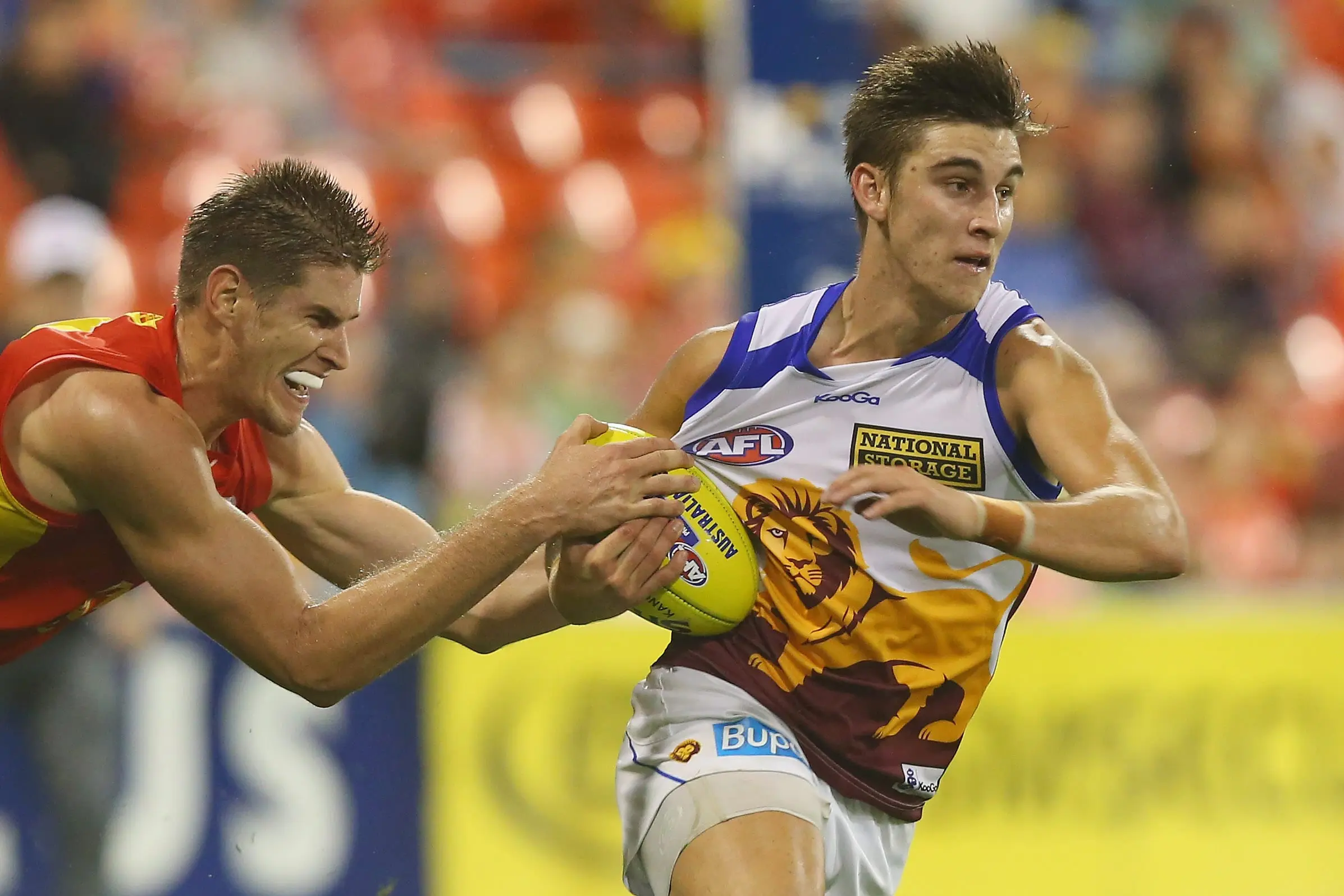Five years ago the Brisbane Lions and Gold Coast Suns were fighting to avoid the indignity of the wooden spoon.
Now, in 2022, one team is in contention for premierships and the other is floundering in a perennial cycle of mediocracy, disappointment and failure that has AFL insiders concerned for their long-term future.
This year the Suns finished the season with their highest ever ladder position (12th) while the Lions halved that (6th), twice tasting finals victory in a year filled with promise.
Although longevity concerns have followed Gold Coast since their inception, even their staunchest critics wouldn't have predicted such a significant gulf between them and their cross-town rivals five years ago.

This is contextualised by Brisbane's tumultuous three-year period between 2015 and 2017 that yielded 12 wins and 54 losses.
The Lions' prospects looked arguably bleaker than Gold Coast's at this time, with those three seasons constituting their lowest finishes of all time.
They narrowly avoided winning the wooden spoon by 2.7 per cent and 0.6 per cent in 2015 and 2016 respectively, with the latter being particularly embarrassing given the only team they finished above was a dismantled Essendon squad full of top-up players after their ugly supplements scandal.
However, this run of fortune (if it can be characterised as such) ended in 2017 when they won their only wooden spoon to date, completing a triad of finishes that never exceeded the bottom two.
Gold Coast fared marginally better during that period, winning just four more games despite the heroics of captain Gary Ablett.
Despite their poor record, there was optimism for the future of Gold Coast, owing to the significant talent on their list and their strong draft hand.

Since this period young players leaving Gold Coast for greener pastures has become somewhat of a foregone conclusion, while Brisbane have shrugged off a similar reputation and become an attractive destination club for big-name recruits.
A bevy of big-name recruits in consecutive years and a cultural shift under Chris Fagan has shaped Brisbane's resurgence from a perennial cellar-dweller into a contender, while trade requests and wasted talent continue to plague an oft-underwhelming Suns outfit.
The additions of Charlie Cameron, Joe Daniher, Lachie Neale and most recently Josh Dunkley have brought intrigue and excitement to the Lions' list that Suns fans can only dream of.
Not only can the Suns not adequately compete for these big-name signatures, but they have been forced to contend with trade requests from players of a similar ilk, including former captains Gary Ablett, Steven May and Tom Lynch and prodigious talents such as Charlie Dixon and, most recently, Izak Rankine.
However, fortunately for Gold Coast, there is a precedent that suggests that stemming the flow of players leaving a club and attracting talent is possible, even in the absence of direct success.
Prior to their trade period successes the Lions also battled with trade requests from key players, punctuated by the infamous 'go home five' mass exodus from Brisbane in 2013.
This involved the departure of Elliot Yeo, Jared Polec, Sam Docherty, Billy Longer and Patrick Karnezis after a poor season that culminated in the sacking of senior coach Michael Voss.
There were fears that the go-home factor would cripple Brisbane's ability to retain youth and remain a competitive outfit.

It was five years ago, halfway through that woeful wooden spoon-winning 2017 season, that Brisbane's national recruiting manager Steve Conole declared it would take a "whole club approach" to turn around the team's fortunes.
Just months prior to this statement the Lions had appointed Fagan and current list manager Dom Ambrogio.
They had also signed David Noble as their general manager of football, a move that was so successful that it helped land him the senior coaching role at North Melbourne in 2020.
This shoring up of Brisbane's foundations with strong football figures resulted in a resurgence up the ladder and, crucially, a cultural shift that was attractive to both big-name recruits and talented draftees.
The Lions have finished 15th, 2nd, 2nd, 4th and 5th in the years subsequent, with arguably their two biggest goal threats (Cameron and Daniher) and a Brownlow medal-winning midfielder (Neale) requesting trades to Brisbane in recent years.
Now, after another successful trade period in 2022 that saw on-baller Josh Dunkley move north from his home state of Victoria, they're again considered premiership contenders.
So, the question remains as to whether Gold Coast can follow in the footsteps of Brisbane and become a finals-contending outfit.
The AFL has invested significant time and resources into the Suns in an attempt to expand the reach of the AFL in Queensland.
This is made difficult by the fact that Brisbane isn't exactly dominating the NRL-obsessed state, having the third-fewest members in 2022 ahead of only expansion clubs GWS (second-fewest) and Gold Coast (fewest).
There is still optimism that the wealth of talent on the Suns' list can guide them to finals footy sooner rather than later, with emerging stars such as Noah Anderson, Matt Rowell and Ben King showing promising signs.
It is often said that success comes 'from the top down'. If Gold Coast are to follow the blueprint made by Brisbane, they need to be sure that their structural backbone is sound.
Time will tell whether this is the case.






